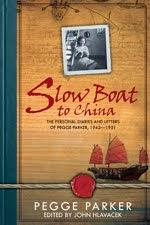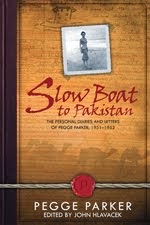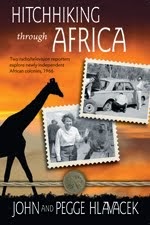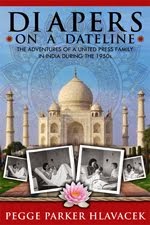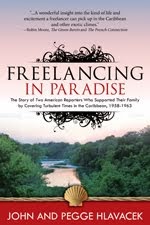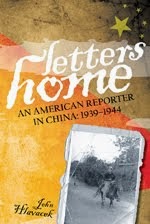Monday morning, July 20, I met David Godfrey at the airport in San Jose for the short flight to Tortuguero. Also on the flight was Dan Evans, the CCC's chief satellite tracking researcher, accompanied by his wife, Gayle, and six year old son, Noah. The Nature Air, 20 passenger Twin-Otter, made a smooth landing on the cement landing strip, so different from the Cessna's landing on the sand beach 50 years ago. There to meet us was Juan Carlos Barrantes, the manager of the research station. Our bags were carried to the small dock and into the station's outboard motor-powered boat. A 15 minute ride on the river and we were at the station, named for John H. Phipps, one of the original sponsors of the CCC. For me, what a change. Now I saw in the coconut grove, modern buildings with marked paths to the little museum, three dormitories, a dining hall, and an air conditioned building housing the library (named for Joshua Powers) and an office, complete with computer communications. We were met by Dr. Emma Harrison, the CCC Scientific Director and the Field Coordinator, Clare Atkinson, who carries out the daily work on the beach. I was taken to one of the dormitories for visiting scientists (me being upgraded). I had a room of my own with four bunks complete with a wash basin, FLUSH TOILET, and a HOT SHOWER. (What a change from a hammock and an outhouse over the river.) The research station has electricity and water piped in from the nearest city.
After a breakfast of scrambled (chicken) eggs, cereal, fruit and coffee, we met a number of the volunteers, young college graduates studying for advanced degrees.
Then Dan Evans gave a presentation about the transmitters which were to be attached to the backs of two turtles on the next two nights. One, which looked like a small, black laundry iron, was manufactured in Australia and, he added, cost $2,100. A second transmitter, manufactured in California, was smaller, and had a built-in GPS system, was $3,600. Dan explained how the two transmitters were to be attached with a special epoxy (a little more complicated than "Elmer's Glue").
After lunch we repaired for a little rest because we looked forward to a night of walking the black sand beach of Tortuguero. I had been advised (warned?) that I could expect as much as four hours each night.) The research station's volunteers patrol the five miles of beach each night, counting each turtle, and tagging it after it has made its nest, laid its eggs, and then lumbers back into the sea.
Tortuguero, of course, is now a bustling community on both sides of the CCC research station. To the south, a ten minute walk, is the community of Tortuguero, and another short walk is the Tortuguero National Park. Also along the river, are several new hotels and resort bungalows, as well as outboard motor boats plying the river. And to the north, just a ten minute walk, is the Mawamba Lodge, a five star hotel complete with swimming pool and a butterfly enclosure. All this means tourists, lots of them, and so there are rules now as to who and when persons can be on the beach. From eight p.m. to midnight, tourists with guides are allowed on the beach. There are two periods - one from eight to ten, and the second from ten to midnight. From midnight until four the beach is open only to the volunteers from the research station.
The capture of the turtle is now "politically correct." No longer is it flipped until morning. Now, the reasearch station has built boxes--roughly three feet by four and with a side that opens, no top. Once a turtle is spotted, the station is alerted and the box is carried to the beach, on long pipes, with six volunteers carrying it. That first night a turtle was found only 50 yards from the station in the first 15 minutes (so I didn't have to walk very far). And the volunteers were helpful, making sure I didn't fall in the dark. The volunteers carry small lights (like a miner's cap) with red and white bulbs. When the turtle has finished laying her eggs and has covered her nest, she is gently nudged into the box as she makes her way to the sea. She is then carried (like a casket at a funeral with pall bearers) to the research station where she stays for the night.
In the morning, Dan Evans brings out the transmitters and his cleaning utensils. The back of the turtle is scrubbed, and then Dan sand papers gently the shell before he applies the epoxy. It is a process which takes close to an hour to complete.
Meanwhile, tourists arrive. They have been alerted about the operation and they are taken in small groups to the box to observe the turtle and the transmitters. Once the demonstration is complete, the box with turtle is carried to the beach. A large sign advertising the CCC is erected and the box side is opened as the turtle flaps her way to the sea watched by swarms of tourists. It's a great show.
The second night, we were lucky again. A turtle was found close to the station, but when it was examined, it was found she had barnacles and thus the volunteers searched for a second turtle. Again, "hlucky", one was found close to the station. This one had a clean back and again, once it had finished its nesting, it was urged into the box and carried back to the station, a distance of some 200 yards. The next morning, more tourists arrived to watch Dan attach the transmitter. Among the visitors was a group from Merrit College in Oakland, California. On this morning there were about 200 watchers. Sabine Berneret, a French nature photographer, who has published her photos of animals in Africa, was with us both nights and has made her pictures available to the CCC. (When I figure out how to add pictures to this blog I will include some in future blogs.)
For those of you who are computer literate, you can follow the tracks of the turtles by accessing the CCC web site. I'm advised that the first transmitter was a product of a company called Sir Track, which uses the Argos wildlife tracking system to provide basic location data on the turtles' whereabouts. The second unit was produced by Wildlife Tracking and uses both GPS and the Argos system to provide location data. The GPS information is far more exact than the Argos data and lets us know exactly how the turtle is behaving and which habitats it is using.
Also the CCC has set up a website for the upcoming 50th anniversary Gala in New York CCC 50th Anniversary Gala.
Look for pix in future blogs, or visit My Photobucket.
Friday, July 31, 2009
Thursday, July 30, 2009
Return to Tortuguero Personal Account
I first met Archie Carr when I was a freelance reporter living in Kingston, Jamaica. I noticed a story that he was conducting an experiment with loggerhead turtles -taking three of them from the west coast of Florida, trucking them to the east coast to see if they would make their way back to the east coast around the south end of Florida. I went to Gainesville and accompanied Archie and his grad students (and two of his own children). Balloons were attached to the shells of the turtles but the experiment, unfortunately was not successful. The turtles sounded and didn't go anywhere. I had hoped to get a story for TimeLife and/or NBC News. No story but Archie then invited me to join the Brotherhood in San Jose.
I arrived in San Jose, accompanied by an attractive young lady from Chicago, Liz Sears. She was the girlfriend of a friend of mine. She had learned of the Brotherhood, phoned Archie and he invited her to join the group.
At San Jose, I joined with the group that went by train from San Jose to Puerto Limon. At Limon, along with Mrs. Phipps, I went to the small zoo, and then to the Central Park to look up at the tall tree to see the two-toed sloths, hanging lazily in the top branches.
Arriving by the chartered Cessna, we walked to the camp (one shack) where the excellent cook, Sibella, had a lunch fixed for us. We then went to the beach where a number of turtles were "belly up." They had been flipped the night before after they had made their nests, laid their ping-pong ball sized eggs, and then covered their nests. Archie's grad students had marked the nests nests and then flipped them so they could be measured in daylight. After they were measured and tagged, they were "righted" and made their way to the sea. The eggs, meanwhile, were scooped up and transferred to new nests protected by wire enclosures.
Of course, one had to be initiated into the Brotherhood - swallowing a raw turtle egg. I have pictures of my own initiation which I will include when I figure out how to include pictures on this blog. (I am still in the instruction stage.)
I have recorded in my book, "Freelancing in Paradise" that we had fried turtle eggs for breakfast each morning. Also, before they were released, red balloons were attached to their shells with fishing line. Archie had hoped to follow their migration paths. also, the turtles were so large that we have pictures of some of the smaller guests riding them down to the shoreline.
Two months later, Archie alerted me that the hatchlings would be popping out of the nests and I flew to Tortuguero and filmed the little wigglers making their way to the sea. Thus, for me, it was a very successful, and profitable, story. I had been able to film at night, the arrival of the turtles as they emerged from the sea, labored like small tanks to their nests, filmed the actual laying eggs (once the turtle begins laying, nothing disturbs her) and the covering of the nests. And in the morning the measuring and attaching of the tags. I was able to film the complete story which was shown on the Today Show, then hosted by Dave Garroway.
That was THEN. Now - 50 years later - the experiments continue, but what a difference 50 years makes...
When I contacted the CCC (Caribbean Conservation Corporation) at Gainesville, David Godfrey, the Executive Director, to ask if there would be any observances, he advised me that a 50th anniversary gala was planned for later in the year in New York. He also advised that the CCC planned to deploy transmitters on two turtles at Tortuguero and invited me to come and watch the experiment.
I arrived in San Jose, accompanied by an attractive young lady from Chicago, Liz Sears. She was the girlfriend of a friend of mine. She had learned of the Brotherhood, phoned Archie and he invited her to join the group.
At San Jose, I joined with the group that went by train from San Jose to Puerto Limon. At Limon, along with Mrs. Phipps, I went to the small zoo, and then to the Central Park to look up at the tall tree to see the two-toed sloths, hanging lazily in the top branches.
Arriving by the chartered Cessna, we walked to the camp (one shack) where the excellent cook, Sibella, had a lunch fixed for us. We then went to the beach where a number of turtles were "belly up." They had been flipped the night before after they had made their nests, laid their ping-pong ball sized eggs, and then covered their nests. Archie's grad students had marked the nests nests and then flipped them so they could be measured in daylight. After they were measured and tagged, they were "righted" and made their way to the sea. The eggs, meanwhile, were scooped up and transferred to new nests protected by wire enclosures.
Of course, one had to be initiated into the Brotherhood - swallowing a raw turtle egg. I have pictures of my own initiation which I will include when I figure out how to include pictures on this blog. (I am still in the instruction stage.)
I have recorded in my book, "Freelancing in Paradise" that we had fried turtle eggs for breakfast each morning. Also, before they were released, red balloons were attached to their shells with fishing line. Archie had hoped to follow their migration paths. also, the turtles were so large that we have pictures of some of the smaller guests riding them down to the shoreline.
Two months later, Archie alerted me that the hatchlings would be popping out of the nests and I flew to Tortuguero and filmed the little wigglers making their way to the sea. Thus, for me, it was a very successful, and profitable, story. I had been able to film at night, the arrival of the turtles as they emerged from the sea, labored like small tanks to their nests, filmed the actual laying eggs (once the turtle begins laying, nothing disturbs her) and the covering of the nests. And in the morning the measuring and attaching of the tags. I was able to film the complete story which was shown on the Today Show, then hosted by Dave Garroway.
That was THEN. Now - 50 years later - the experiments continue, but what a difference 50 years makes...
When I contacted the CCC (Caribbean Conservation Corporation) at Gainesville, David Godfrey, the Executive Director, to ask if there would be any observances, he advised me that a 50th anniversary gala was planned for later in the year in New York. He also advised that the CCC planned to deploy transmitters on two turtles at Tortuguero and invited me to come and watch the experiment.
Labels:
Costa Rica,
Green sea turtles,
Hlavacek,
Puerto Limon
Tuesday, July 28, 2009
Return to Tortuguero
It was July 23, 1959, when I joined a group of college professors and conservation supporters at the green turtle nesting beach at Tortuguero (Costa Rica) to the first official meeting of the Brotherhood of the Green Turtle.
And last week, 50 years later, I returned to the beach as a guest of the Caribbean Conservation Corporation, the successor to the Brotherhood. www.cccturtle.org
That first meeting was led by Professor Archie Carr, the herpetology professor at the University of Florida at Gainesville. Archie, in the 50's, had written "The Windward Road", which told of the decline in the population of the green sea turtle because of the "encroachment of civilization" (my term) upon the island beaches of the Caribbean. A New York book publisher, Joshua B. Powers, read the book. Impressed, he sent it to several friends and the result was a meeting of conservation enthusiasts where a decision was made to support Archie in his quest to protect the green sea turtle.
One result was a decision by the Government of Costa Rica to allocate a five mile beach at Tortuguero on the Caribbean coast which had been the nest area for the green turtle for thousands of years. The Brotherhood had the right to patrol the beach and set up a camp for studying the turtle and to protect the area from poachers -both four footed and two footed.
A decision was made to assemble in San Jose on July 23rd. I now quote from the Brotherhood Booklet which was published in July of 1961:
"The invitation to attend was general but not pressed because none of us knew what we should find, when or whether we should eat, or where or whether be sheltered. We assembled in San Jose as agreed - Directors John H. (Ben) Phipps with Mrs. Phipps, James A. Oliver, Archie Carr, and Joshua Powers, members Charles M Bogert, Ray E. Crist, Hugh Popenoe, Jack Fendell and Thomas Powers: Saturday Evening Post ace photographer Gus Pasquerella; Life and Time collaborator John M. Hlavacek, and Sports Illustrated staffer Jack Olson. Local members Ricardo Castro Beeche and Guillermo Cruz G. gave generous aid."
"The Board met and then adjourned to meet again at the beach. Some proceeded by air to Puerto Limon -quite a flight in the rainy season. Some went by train (I was in that party) on Sunday-a remarkable trip with great variety of mountain, jungle, rain forest, coffee, bananas, cacao, bread fruit and people.
At Puerto Limon a Cessna took three at a time, complete with bed rolls, mosquito tars, beer, soda pop, fishing gear and raincoats fifty miles up the beach to our camp in the coconut grove - the sea at our front door, a river at our back door, and thankfully, a snake-free Chick Saler on the river bank ten feet above the hyacinths. (I say thankfully, but snake catchers Phipps, Oliver and Bogert were not so happy to find not a single terciopelo.)
As we flew from Puerto Limon we saw our first fresh turtle tracks as we approached our protected area, and turtles in the sea. Finally as we flew over our camp we saw thirteen three-hundred pound mommas scattered along the beach, belly up, waiting for us to tag, each with his own silver tag bearing his initials (the tags were from Tiffany's). Fabulous, the whole thing.
This was the official account of the first meeting. My own personal experience will be continued in a future blog.
And last week, 50 years later, I returned to the beach as a guest of the Caribbean Conservation Corporation, the successor to the Brotherhood. www.cccturtle.org
That first meeting was led by Professor Archie Carr, the herpetology professor at the University of Florida at Gainesville. Archie, in the 50's, had written "The Windward Road", which told of the decline in the population of the green sea turtle because of the "encroachment of civilization" (my term) upon the island beaches of the Caribbean. A New York book publisher, Joshua B. Powers, read the book. Impressed, he sent it to several friends and the result was a meeting of conservation enthusiasts where a decision was made to support Archie in his quest to protect the green sea turtle.
One result was a decision by the Government of Costa Rica to allocate a five mile beach at Tortuguero on the Caribbean coast which had been the nest area for the green turtle for thousands of years. The Brotherhood had the right to patrol the beach and set up a camp for studying the turtle and to protect the area from poachers -both four footed and two footed.
A decision was made to assemble in San Jose on July 23rd. I now quote from the Brotherhood Booklet which was published in July of 1961:
"The invitation to attend was general but not pressed because none of us knew what we should find, when or whether we should eat, or where or whether be sheltered. We assembled in San Jose as agreed - Directors John H. (Ben) Phipps with Mrs. Phipps, James A. Oliver, Archie Carr, and Joshua Powers, members Charles M Bogert, Ray E. Crist, Hugh Popenoe, Jack Fendell and Thomas Powers: Saturday Evening Post ace photographer Gus Pasquerella; Life and Time collaborator John M. Hlavacek, and Sports Illustrated staffer Jack Olson. Local members Ricardo Castro Beeche and Guillermo Cruz G. gave generous aid."
"The Board met and then adjourned to meet again at the beach. Some proceeded by air to Puerto Limon -quite a flight in the rainy season. Some went by train (I was in that party) on Sunday-a remarkable trip with great variety of mountain, jungle, rain forest, coffee, bananas, cacao, bread fruit and people.
At Puerto Limon a Cessna took three at a time, complete with bed rolls, mosquito tars, beer, soda pop, fishing gear and raincoats fifty miles up the beach to our camp in the coconut grove - the sea at our front door, a river at our back door, and thankfully, a snake-free Chick Saler on the river bank ten feet above the hyacinths. (I say thankfully, but snake catchers Phipps, Oliver and Bogert were not so happy to find not a single terciopelo.)
As we flew from Puerto Limon we saw our first fresh turtle tracks as we approached our protected area, and turtles in the sea. Finally as we flew over our camp we saw thirteen three-hundred pound mommas scattered along the beach, belly up, waiting for us to tag, each with his own silver tag bearing his initials (the tags were from Tiffany's). Fabulous, the whole thing.
This was the official account of the first meeting. My own personal experience will be continued in a future blog.
Labels:
Costa Rica,
Green sea turtles,
Hlavacek,
Puerto Limon
Subscribe to:
Posts (Atom)



